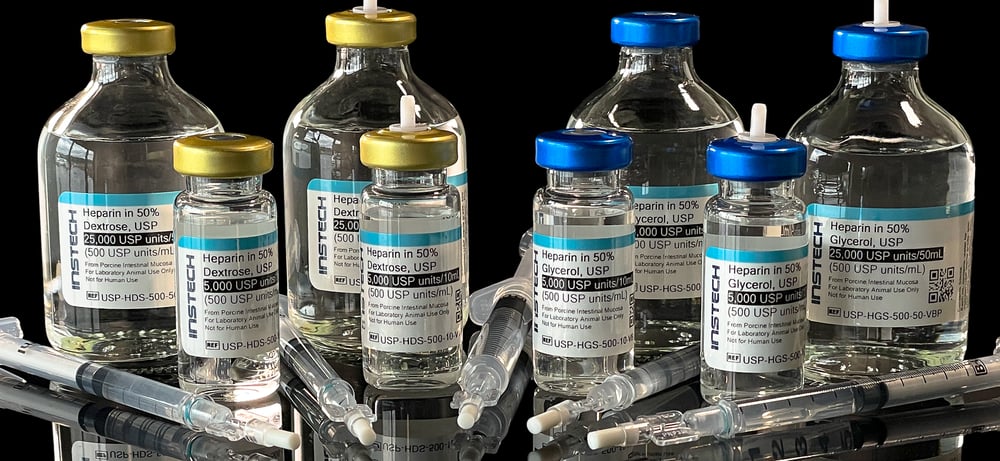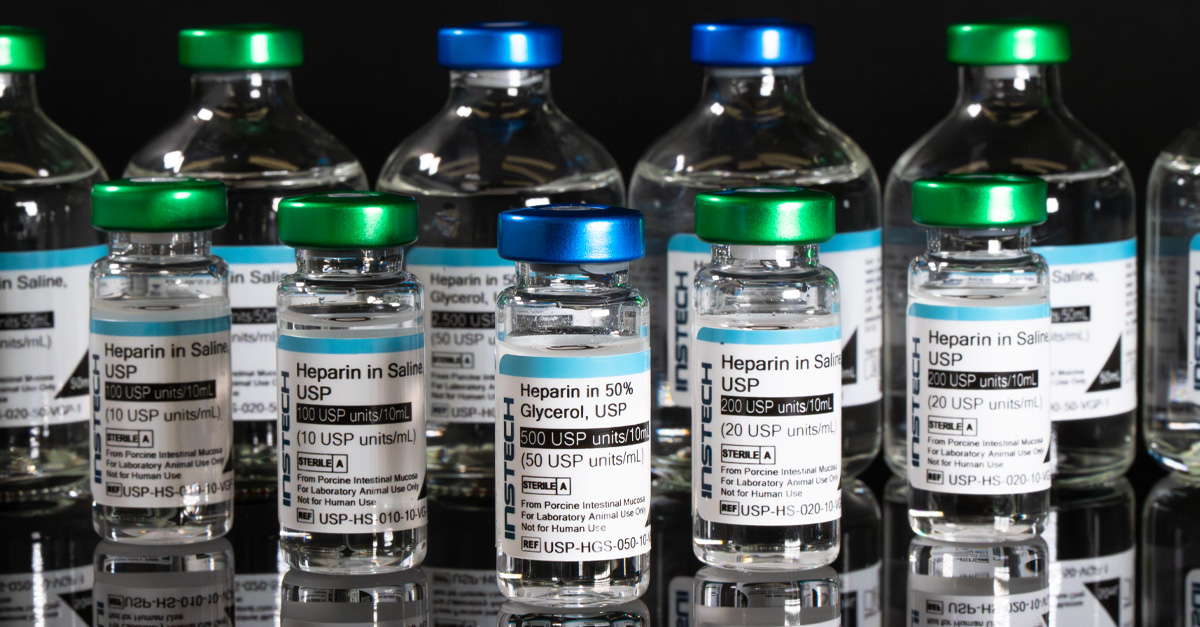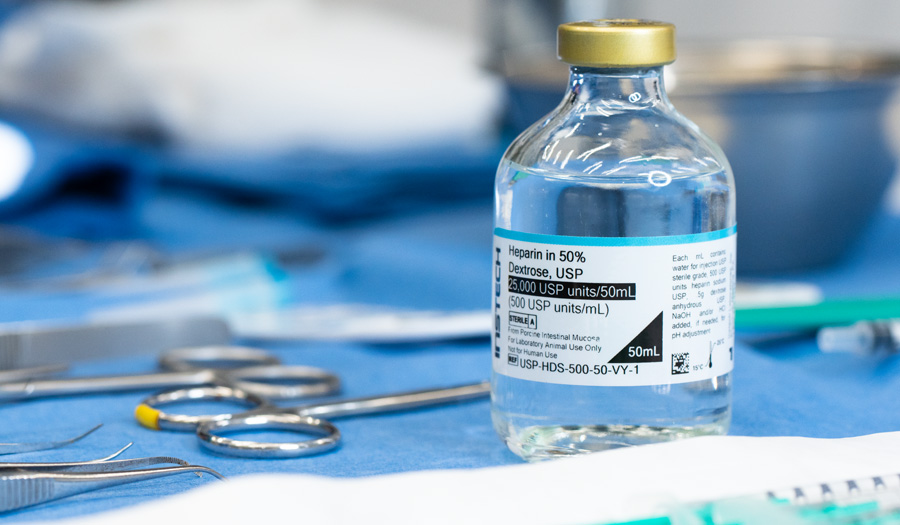
Lock solutions are often viscous and contain a relatively high concentration of anti-coagulant and sometimes an anti-microbial. The viscosity can help prevent blood from diffusing into the catheter from the tip. Heparin (500 units/ml) in either 50% glycerol or 50% dextrose are the most common lock solutions in lab animal research thanks to the “Comparison of Catheter Lock Solutions in Rats” paper by Dr. Luo et al., where they performed better out to four weeks than heparinized saline or heparinized polyvinylpyrrolidone (PVP). Of the two, dextrose is often preferred because glycerol’s texture, or lack thereof, makes it hard to work with. However, if any portion of a catheter is exposed outside the animal, glycerol performs better because the dextrose solution (or heparinized saline) will evaporate more rapidly through the tubing wall, pulling blood into the tip. Sodium citrate is an alternative anti-coagulant for a lock solution if heparin is contraindicated; it does not perform as well as heparin, but is still effective. Taurolidine citrate (TCS™) is another option, often used in large animal ports or when heparin is not appropriate. It has human clinical data but no comparison studies in small animals. A common thread for all lock solutions is that users need to be careful not to infuse any into the animal, which means knowing the catheter dead volume accurately and using a correspondingly precise syringe.
Flush solutions, on the other hand, are designed for clearing catheters and should be safe if infused. Most often they are a lower concentration of heparin, 10 or 20 units/ml, in 0.9% NaCl (Normal Saline), or just 0.9% NaCl (Normal Saline) USP Sterile Grade without heparin.
There is no one right answer to a lock or flush solution formulation; it depends on your protocol (infusing is easier than blood sampling, for example), the species, your surgery, and your catheter system. For example, CRL was able to keep 84% of mouse JVC catheters patent out to 9 weeks using only saline - no anticoagulant at all - but dosing daily.
In another study by CRL, VAB™ rats were locked with 20IU/mL heparinized saline or saline only, achieving 8 weeks of patency with both methods. Also note, CRL routinely flush and lock VABs™ in rats with heparinized saline (5IU/mL).
Interested in learning more about lock and flush solutions?
Read the Guide to Catheter Lock and Flush Solutions for Laboratory Animal Research
TCS is a trademark of Access Technologies.


